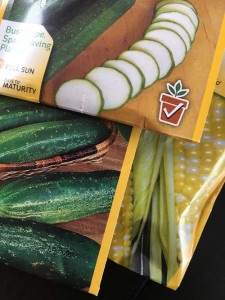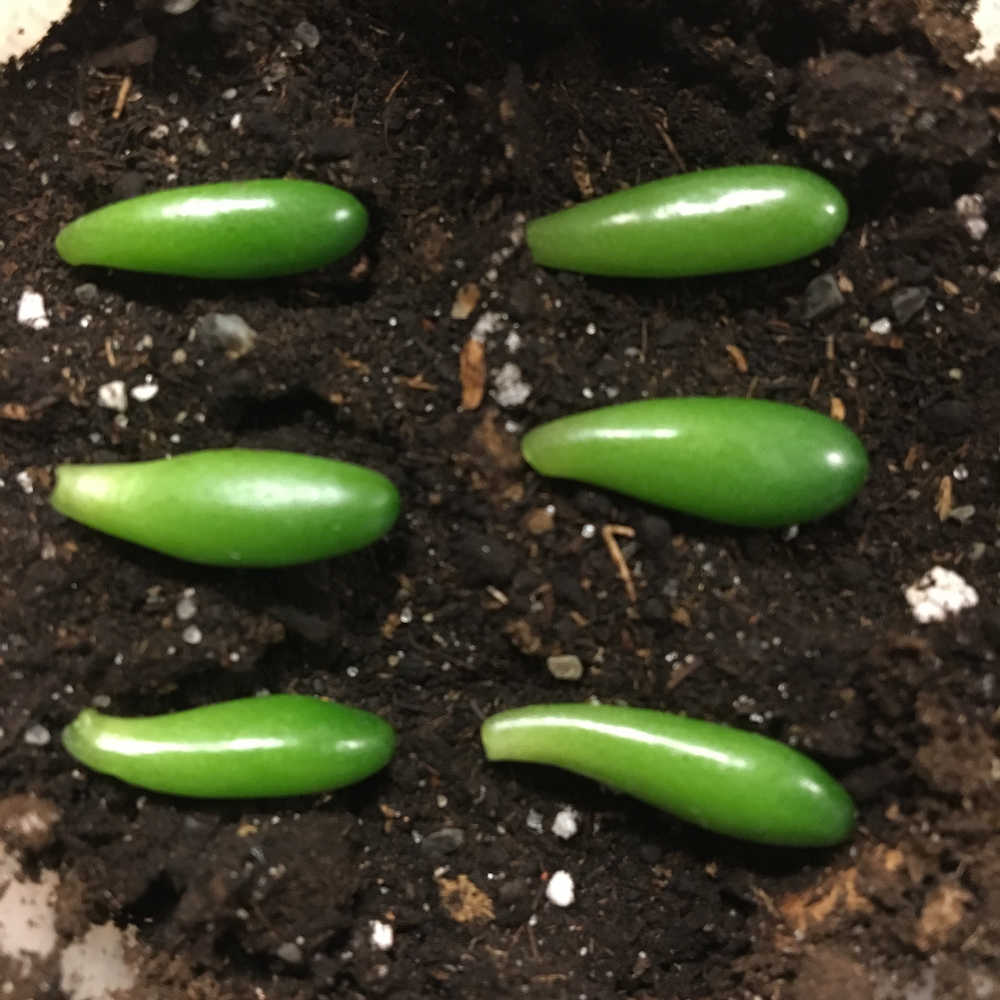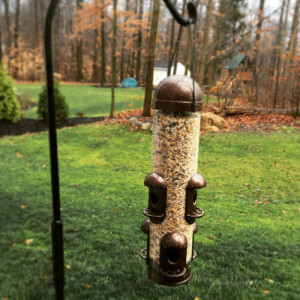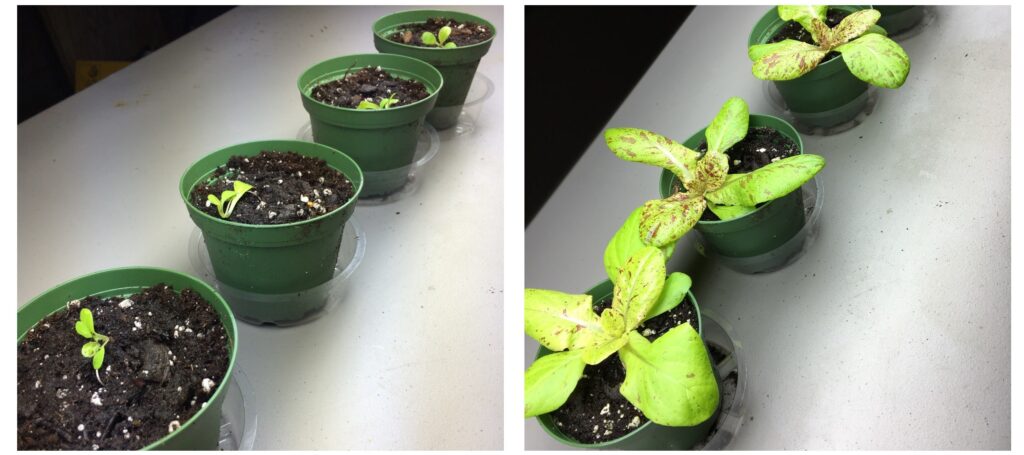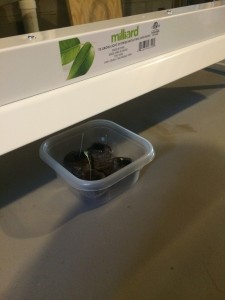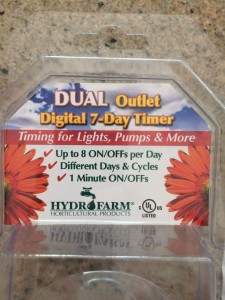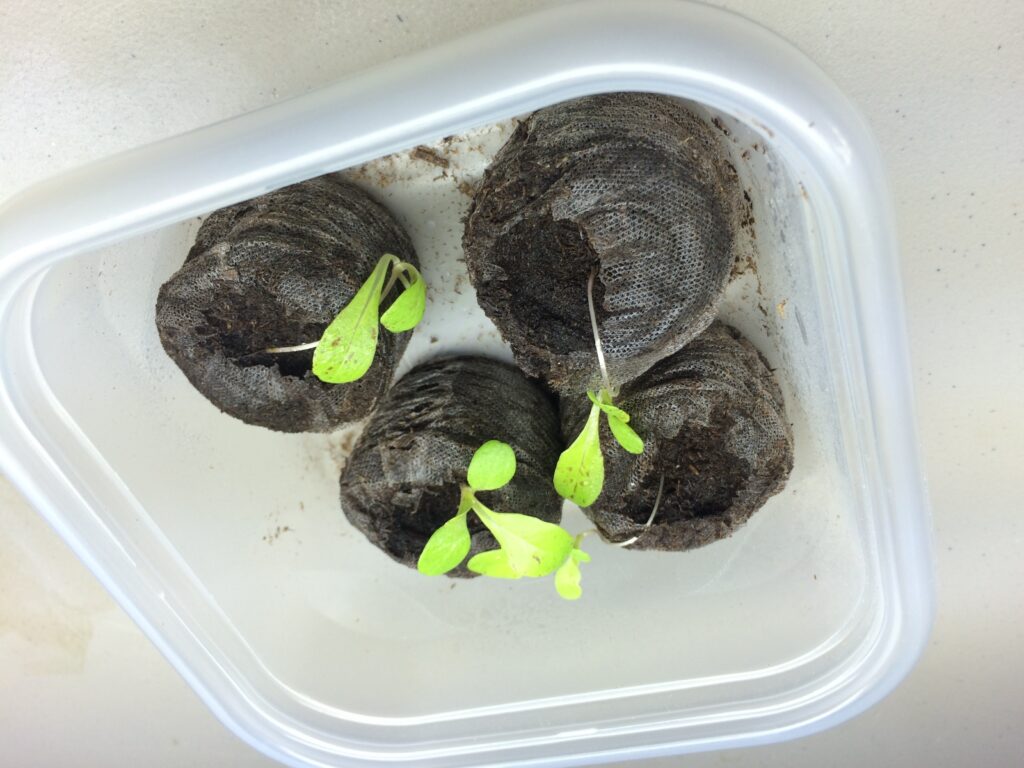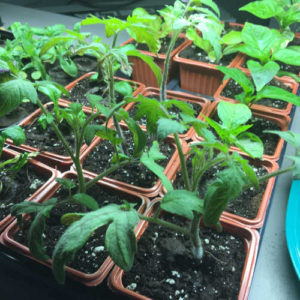 My basement seed starting experiment was going full speed ahead. Tomato, pepper, romaine, spinach and cauliflower plants were plugging along happily when I noticed a few tiny bugs crawling around on the table under the seed trays. I identified them as clover mites, which, as I now know, love to snack on plant material.
My basement seed starting experiment was going full speed ahead. Tomato, pepper, romaine, spinach and cauliflower plants were plugging along happily when I noticed a few tiny bugs crawling around on the table under the seed trays. I identified them as clover mites, which, as I now know, love to snack on plant material.
I really didn’t want to spray the vegetable plants. A few days later, I was taking care of a handful of these little red bugs. Then more. And even more. So I scouted and picked bugs off plants and the table. Finally, the numbers got too high and I realized I had to do something. But what?
So I sprayed the table with a traditional insecticide and then washed it down with soap and water. I’m not sure if there was permanent damage to the plants, but the bugs are gone and plants seem happy.
Just the thought of all that time and effort of raising those plants going down the drain was breaking my heart. And here are the things I was trying not to think:
- S#!&, I can’t do this because I have a black thumb. Or I don’t have the instinct for plants. I am, of course, ignoring the spathiphyllum that we’ve kept alive for ten years and the five jade plants I’ve propagated from cuttings. Maybe that’s different from growing vegetables from seed?
- I’m just going to go buy plants at a garden center. This whole seed starting adventure has been fun, but there are people who do this for a living. These young plants are so fragile. I’ll just go buy tomato plants.
- I’m just going to buy bell peppers at the grocery store. But what fun is that?
- This is too hard and I’m never doing this again.
I’m fighting against the urge for instant gratification. Nothing about this process is instant. It’s slow and sometimes steady. It’s teaching me both to fight and to wait and see what happens.
It’s been a few weeks since the clover mite problem, and you can see in the pic, we’re still in business. Just a few more weeks until planting.
